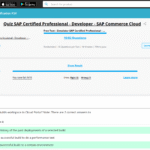Creating a successful thesis outline is a crucial step in the process of developing an academic argument. It is a form of structure that helps writers to organize their thoughts, research and evidence around a specific thesis topic. A thesis outline should be well-structured, comprehensive, and clear so that the reader can easily follow the argument. This article will discuss five strategies for developing a successful thesis outline that can help writers to effectively organize their thesis paper and ensure that their research objectives are met.
Establish a Clear Purpose
Establishing a clear purpose is essential for developing a successful thesis outline. This involves understanding the fundamental topic of interest, narrowing down the focus of the research, and creating a specific research question. It is important for the research question to be as concise and clear as possible to provide a strong direction for the research. Additionally, it is important to consider who the audience is and what the intended outcomes of the research are. This will help to ensure that the research objectives are met and the paper is tailored to the audience. Moreover, it is important to consider the scope of the research in order to ensure that the research is achievable and the resources are manageable. Taking the time to develop a clear purpose will help to ensure that the thesis outline is well-structured and comprehensive.
Identify the Key Elements
The second step in developing a successful thesis outline is to identify the key elements. This involves considering the structure of the paper, outlining the main points, and identifying the research methods and sources of information. It is important to identify the structure of the paper in order to ensure that the argument is organized in a logical manner. Additionally, outlining the main points helps to ensure that all the relevant information is included in the paper.
Collect and Analyze the Data
The third step in developing a successful thesis outline is to collect and analyze the data. This involves selecting an appropriate research method, collecting relevant data through interviews, surveys, or other primary research sources, and analyzing the data using the appropriate method. It is important to select the most appropriate research method in order to ensure that the results are valid and reliable. Examples of research methods include quantitative, qualitative, or mixed-methods approaches. Furthermore, it is important to collect information from reliable sources in order to ensure the accuracy of the results. Additionally, it is important to analyze the data using appropriate techniques, such as descriptive statistics or regression analysis. By following these steps, the researcher can ensure that the data used in the thesis is both valid and reliable.
Generate an Outline
The fourth step in developing a successful thesis outline is to generate an outline. This involves creating a preliminary outline, organizing the outline into main topics and subtopics, adding supporting evidence to the outline. It is important to create a preliminary outline in order to ensure that all the relevant information is included. Additionally, it is important to organize the outline into main topics and subtopics to ensure that the argument is presented in a logical manner. Furthermore, it is important to add supporting evidence to the outline to ensure that the argument is well-supported. Finally, it is beneficial to check out Academichelp for writing services that can help with the process of creating a successful thesis outline. These services can provide guidance and assistance in developing an effective outline that meets the research objectives.
Revise the Outline
The fifth and final step in developing a successful thesis outline is to revise the outline. This involves reviewing the outline for accuracy, incorporating feedback from peers, and making necessary revisions. It is important to review the outline for accuracy in order to ensure that the argument is well-structured and clear. Additionally, it is important to incorporate feedback from peers in order to ensure that the argument is well-supported and accurately reflects the research objectives. Finally, it is important to make necessary revisions to ensure that the thesis meets the research objectives.
Conclusion
In conclusion, developing a successful thesis outline is an essential step in the research writing process. This article has discussed five strategies for developing a successful thesis outline, including establishing a clear purpose, identifying the key elements, collecting and analyzing data, generating an outline, and revising the outline. By following these strategies, writers will be able to effectively organize their research and ensure that their thesis paper is comprehensive, well-structured, and meets the research objectives. With these strategies, writers can be sure to create a successful thesis outline that will effectively guide their research writing process.















